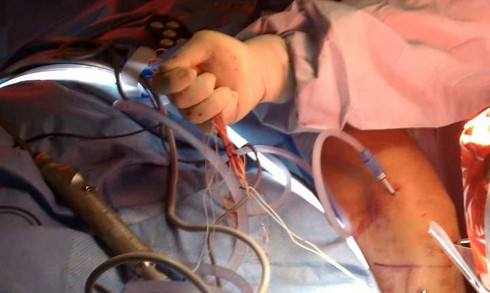NBA Star Klay Thompson: How a hamstring strain turned into an ACL tear
- Dr. Justin C. Lin
- Jun 24, 2019
- 3 min read
Updated: Jan 10, 2020
A couple of weekends ago, as a basketball fan, I watched Game 6 of the Golden State Warriors vs the Toronto Raptors. During the game, I saw Klay Thompson writhe in pain after a hard landing on his left leg during a foul. I quickly put my physical therapy hat on and said to my friend, who was sitting next to me, “it’s an ACL tear” before they announced it a day later. How did I know that by just watching?
I knew Thompson wasn’t playing at 100% because earlier in the week leading up to Game 6 he had to be rested for a game due to a “hamstring strain.” In my opinion, when it comes to professional sports, most physical injury is downplayed until something happens that is impossible to cover up. No need to point the finger but quite possibly it was a grade 1-2 hamstring tear already and was underreported.
In my last blog I wrote about hamstring strains and what you need to know about them. If you missed it, check it out here. One of the things I highlighted was the importance of balancing out the strength of the quadriceps and how it really should be all about the hamstrings.
Because Thompson’s hamstrings were weakened or not able to control the quadriceps it is safe to say the hip was already in a forward or anterior position which, during the impact, caused the ACL to have to control a force it could not withstand.
If I wasn’t already convinced it was his ACL, when Thompson stood up and buckled a bit, I was left without a doubt.
The ACL: What you need to know
The Anterior Cruciate Ligament is a ligament with two very strong bands that adjoin the bottom of the femur (thigh bone) to your tibia (shin bone). Its major purpose is to withstand rotation and stress that may cause the knee to overly rotate. It also helps absorb any excess force that might cause the knee to buckle inward or outward when the knee is flexed.


(images courtesy of Wordpress)
How to rehab from ACL surgery
A full course should take 10-12 months to get back to full form.
There are generally two routes for surgery when going through an ACL reconstruction of any traumatic nature.
1) Allograft: which is a ligament from a cadaver.
2) Autograft: where we use a hamstring tendon or another tendon (sometimes the patellar tendon) that surgeons can harvest.
The latter is stronger but, as I will point out below, the recovery may be a longer and potentially rougher one.
The recovery process will be a long one. I was a full fledged physical therapist and knew what to expect after my ACL surgery and it was still a mental challenge to overcome the instability. I tried to skip steps in my rehab and climb Machu Picchu six months post-op and I think that set me back for nearly two years.
If you’re curious what an ACL repair surgery looks like, these are the pictures of mine:
The hamstrings are the key to ACL rehab, not the quads
If you decide to use a hamstring autograft, then you not only are you recovering the knee but you will essentially have to rehab a small hamstring tear of sorts.
What I was taught about ACL rehab was completely wrong. Quadricep strength, albeit important, should not be the primary concern. It should be the ability for the knee to bend and flex and the hamstrings to take over both concentrically and eccentrically (shortening and lengthening).
Imagine you’re standing with your knees locked. There are two ways you can keep your knees in this position: either by pushing up against your knee to hold it in place (what the quad does), or by pulling outward at the back of your knee (what your hamstring does). Our goal is to improve the hamstring’s ability to hold your knee in place.
Why am I so high on the hamstring? When I developed the ACL protocol at Rehab and Revive, I realized this was the key to getting not only my patients back to normal, but also myself.
If you’ve had an ACL tear in the past and you’re not quite sure what rehab should look like, start with these two exercises. They’re a great jumping off point.
If you have any questions you know where to find us. Remember we heal smarter, not harder.
Dr. Justin C. Lin












Comments